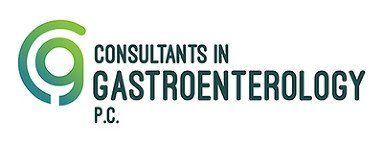QUALITY CARE
Get the comprehensive, compassionate care you deserve for all of your acute or chronic gastroenterological needs.

Gastroesophageal Reflux Disease
First of all, heartburn has nothing to do with your heart. Rather, it is a specific form of indigestion caused by a backup, or reflux, of stomach acid into your esophagus. It is usually felt as a burning discomfort in the pit of the stomach or higher up in the middle of the chest beneath the breastbone. Rarely, a referred pain is felt between the shoulder blades or in the jaw or teeth. Because the searing pain feels concentrated around the base of the breastbone, people often mistake it for a pain in the heart.
Typically, heartburn occurs after meals. Common foods such as fried or fatty foods, tomato products, citrus fruits and juices, chocolate or caffeine-containing products can produce these symptoms. In severe cases, almost any food seems to cause symptoms. Usually the burning-type chest pain lasts for many minutes and is often made worse after lying flat or bending over. Often there is a sensation of food coming back into the mouth, accompanied by a bitter or acid taste. Sometimes a gnawing sensation awakens an individual from sleep. Relief is usually obtained by standing upright or by taking a dose of antacid.
Heartburn is Common
Almost everyone experiences heartburn occasionally. Over 30 percent of all Americans suffer from heartburn at least once a month and approximately 10 percent suffer daily. Although heartburn is common in our society, it is rarely life-threatening. It can, however, limit an individual’s daily activity and sense of well being. For some people, heartburn is so severe that it becomes incapacitating.
Causes of Chronic Heartburn
Chronic heartburn is a symptom of a disorder called gastroesophageal reflux disease, also called GERD. The cause of this disorder is multifactorial, but one important factor involves the malfunction of a small, one-way valve, called the lower esophageal sphincter or LES.
Every time you eat, your stomach produces hydrochloric acid to help digest your food. To prevent you from digesting your own stomach, your stomach has a special mucous lining to protect itself from the effects of the acid. Unfortunately, your esophagus, or “food pipe,” has no special protection against acid – instead you have a one-way valve, the LES. Located at the point where the esophagus joins the stomach, the LES valve acts like a tiny “trapdoor.” Normally, the door is closed. When you swallow, this tiny door opens to allow the passage of food into the stomach, but then quickly closes once again to prevent backward flow.
When functioning properly, the LES valve allows food and water to pass into the stomach, but prevents backward flow of the stomach acid. If the LES valve is weak, reflux of stomach contents into the esophagus occurs. Even a little acid from the stomach can irritate the delicate lining of the esophagus causing the severe inflammation and painful symptoms. Often this malfunction of the LES is associated with a hiatal hernia – a common partial displacement of the stomach through the diaphragm and up into the chest cavity.
Severe Form of Heartburn – Gastroesophageal Reflux Disease
When acid regurgitation causes occasional simple heartburn, that is not a problem. However, when the acid exposure is severe, the lining of the lower esophagus becomes inflamed and may cause ulcers to form. GERD refers to this severe damage, not just simple heartburn. Strangely, the rate of GERD is rising dramatically in the United States and Britain. The number of newly diagnosed cases has increased more than five-fold over the past 20 years. The reasons for this increase are unclear.
Complications of GERD
Heartburn can be a serious problem for some people with GERD. If the delicate lining of the esophagus is exposed to stomach acid for prolonged periods of time, the lining of the esophagus can become inflamed (esophagitis), making it so sensitive that sometimes swallowing is painful. Prompt treatment of esophagitis is necessary to prevent sores (ulcers) from forming in the lining of the esophagus. Left untreated, esophageal ulcers can cause bleeding leading to vomiting of fresh red blood or old “coffee-ground” blood. Sometimes the bleeding goes unnoticed until the passage of black bowel movements.
Continuous inflammation over a long period of time may cause scar tissue to build up in the esophagus, narrowing the opening (stricture) and making it difficult to swallow solid food. This is may require special dilatation to allow normal swallowing function.
When heartburn goes untreated over a long period of time, acid reflux from the stomach can cause cells lining the esophagus to change. The changed lining, called Barrett’s Esophagus, is a precursor condition to cancer of the esophagus. The risk of cancer of the esophagus is increased in people who have Barrett’s. Patients diagnosed with Barrett’s Esophagus need periodic endoscopy with biopsy of the esophagus to survey for development of cancer.
When to See Your Doctor About Heartburn
Not everybody who experiences heartburn needs to see a doctor. But if the symptoms are frequent, severe, or progressive, seek medical attention. If you have heartburn, ask yourself these questions:
- Do you take antacids two or more times a week?
- Do you take heartburn medicine(s) other than antacids?
- Does your heartburn interfere with your daily activities?
- Do these symptoms often occur after meals?
- Do these symptoms interfere with your sleep?
- Do you find that your medicine only relieves your symptoms for short periods of time?
Treatment
Once your doctor has determined that your symptoms are caused by acid reflux, treatment can be prescribed. This may be as simple as making some life-style changes such as the way you eat. In less severe cases, such simple measures and occasional antacids are sufficient. In more severe cases of GERD, medications such as Tagamet (also available as the generic cimetidine), Zantac, Pepcid or Axid may be recommended. These are all available either in stronger prescription strength or lower dose over-the-counter form. When medication is prescribed, it is usually for life since the symptoms often return if the medication is discontinued.
More powerful prescription medications such as Nexium, Protonix, Aciphex or Prevacid are often used in patients with persistent symptoms. These medications particularly are very effective in even the most difficult cases. Short term they are very safe. The main known side effect is cost since treatment is usually lifelong. Longterm side effects are unknown.
With such effective medications, surgery is rarely necessary. However recent techniques have raised interest in surgical treatment. In the past, surgery for GERD often meant a major surgical incision and up to a six week recovery period. A newer laproscopic technique using a scope and three or four tiny incisions is now available. This new procedure, called a Nissen Repair, allows a shorter hospital stay and recovery period and may make surgery a better option for selected patients.
Ten Ways to Relieve Heartburn
Here are a few simple life-style changes you can follow to relieve some of the symptoms associated with acid reflux and heartburn:
- Avoid tobacco. It increases acid production. If you can’t stop completely, cut down.
- Avoid excessive consumption of caffeine, alcohol, chocolate, peppermint, and fatty foods. Of course, also avoid any food you know that will cause you to have episodes of heartburn.
- Avoid bending or stooping after eating – this forces acid into your esophagus and causes heartburn.
- Eat smaller, more frequent meals during the day. Try to avoid eating within three hours of bedtime.
- Let out your belt a notch or two and wear looser, more comfortable clothing. Avoid girdles and other tight garments. The extra pressure on your abdomen forces acid upward.
- Lose weight if your doctor feels this would help. Exercise is good, but avoid sit-ups and leg lifts which can worsen acid reflux.
- Put gravity on your side. Sleep with the head of your bed raised. Don’t use two pillows but raise the headboard about six to eight inches on blocks.
- Use over the counter antacids if needed. Tums and Gaviscon are often helpful, but if you need these medications more than three times a week see your doctor. Take prescription medication according to your doctor’s instructions.
- Take all medications exactly as prescribed by your doctor.
- Contact your doctor if symptoms continue despite these simple measures.
